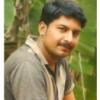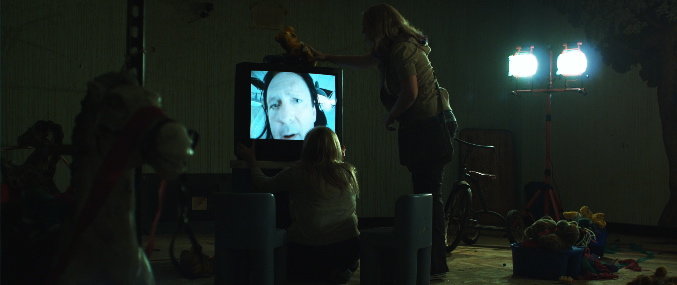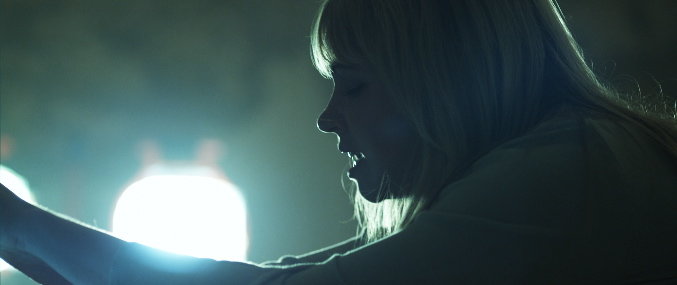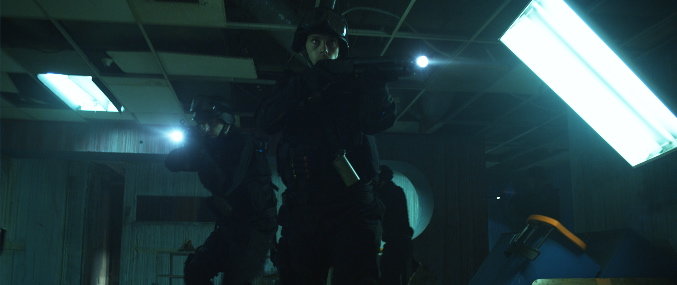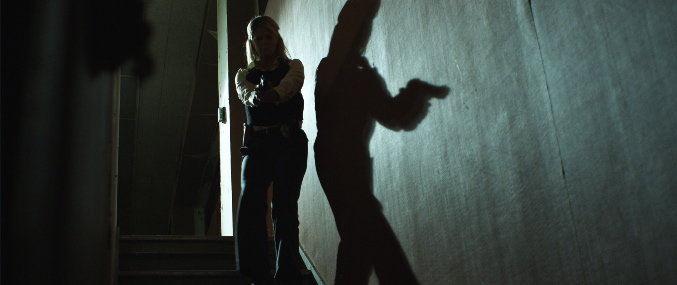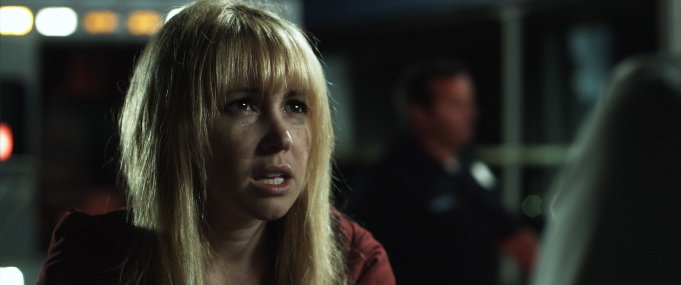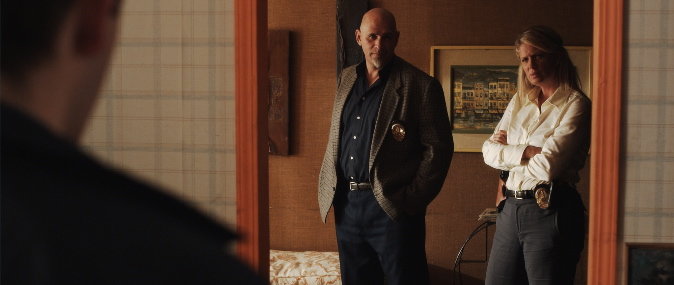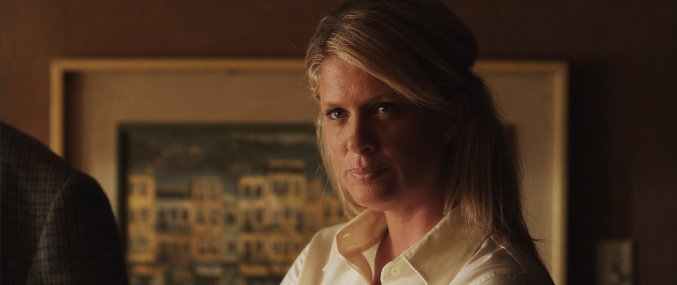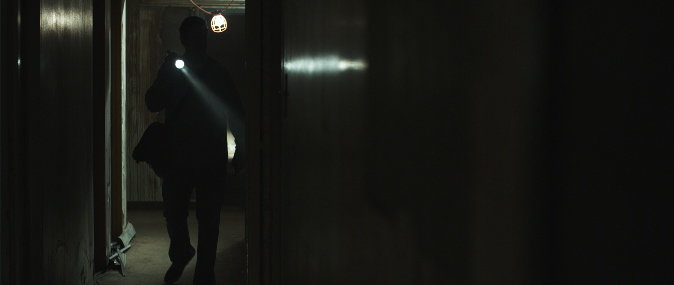
Jayson Crothers
Premium Member-
Posts
350 -
Joined
-
Last visited
About Jayson Crothers

- Birthday 03/25/1979
Profile Information
-
Occupation
Cinematographer
-
Location
Los Angeles, CA
Contact Methods
-
Website URL
http://
Recent Profile Visitors
-
Will Shermer started following Jayson Crothers
-
There was a short lived TV show called "Miracles" back in 2003 that shot with anamorphic lenses but composed for 4x3 because they liked the optical qualities of the lenses - there's an AC article on it: http://www.theasc.com/magazine/feb03/divine/index.html.
-
I ended up using metal shutters on a 12K HMI Fresnel and a 4K HMI Fresnel (would have liked a 6K or another 12K, but the budget was cut at the last minute). It took a little bit of trial and error to find the right timing, but once we did it looked fantastic.
-
Working a Union Shoot as a Non-Union DP
Jayson Crothers replied to a topic in Business Practices & Producing
Ben, you and I are in the same boat. I was asked to shoot 2nd Unit for a Fox television show recently, but I'm currently non-union. The show anticipates only 1 day of 2nd Unit work per episode, which means over 13 episodes I'd work perhaps 13 days (assuming they needed 2nd Unit for each episode, which isn't a guarantee, plus the show is already shooting, so I'd be starting late into the season). To be eligible for this, I had to submit my paperwork to contract services to get on the roster (this is a task in and of itself), then after being approved by them, I had to take my safety training courses (as DP's, we get off easy - I think it was only 4 classes), and now I'm gathering together my money for the initiation fee - I'm still debating if this is the right time to join (cost of joining versus what I'll make on the show). I'm happy to answer any questions, but your best bet is to contact contract services and local 600 - both are happy to provide you information. -
This is a cross-post from the RED sub-forum. I'm about to start shooting a 2 camera RED feature and there's a night exterior scene with lightning. I'm trying to arrange for some Lightning Strikes units, but a colleague recently shot a music video on a Red with a 70K Lightning Strikes and had problems with the rolling shutter only capturing the flashes on parts of the frame (for example, there would be a horizontal bar at the top and bottom of the frame that showed the flash, but not the middle). Is it possible to adjust the Lightning Strikes to flash a bit longer, sync with the cameras (and how time consuming is that?), etc? It's either this is a 12K with metal shutters........
-
I'm about to start shooting a 2 camera RED feature and there's a night exterior scene with lightning. I'm trying to arrange for some Lightning Strikes units, but a colleague recently shot a music video on a Red with a 70K Lightning Strikes and had problems with the rolling shutter only capturing the flashes on parts of the frame (for example, there would be a horizontal bar at the top and bottom of the frame that showed the flash, but not the middle). Is it possible to adjust the Lightning Strikes to flash a bit longer, sync with the cameras (and how time consuming is that?), etc? It's either this is a 12K with metal shutters........
-
"The Gladiators"
Jayson Crothers replied to Jayson Crothers's topic in In Production / Behind the Scenes
Geovane, I don't have my notes near me, but I want to say they were around 6000 degrees, but don't quote me on that. The baseball field used only the available light from the stadium lights and a little HMI lighting - there were no Tungsten units used at all. The wide shot of the night exterior is strictly available light with (I believe) the camera set for 5600 - the close up of the player has an HMI playing in the background a little and he's got a large Muslin frame that's serving to both flag off one of the stadium lights while also bouncing another. I remember selecting that field because the stadium lights were a close match to daylight, whereas another field nearby had very warm lights. -
The Brazen Bull
Jayson Crothers replied to Jayson Crothers's topic in In Production / Behind the Scenes
Thanks David! XiaoSu - If you poke around in the archives, I've discussed my experiences at AFI quite a bit, so that may be of help as well. In general, AFI isn't a very technical school - I learned a great deal more about cinematography as an art-form (and from that you're forced to REALLY focus on mastering the craft in the pursuit of art); don't misunderstand me - AFI isn't an "art-school", but the central focus of the program is collaboration and the singular importance of the story, and then using the tools around you to help best tell that story visually, as opposed to a program that has a lot of equipment and teaches you a lot of technique. I think some of the best work I've ever done was my first year at AFI with virtually no equipment, but instead a group of passionate, intelligent people taking bold risks with essentially no resources. It's a program designed to take students who have a firm grasp of the basics on cinematography and push them to get past "how" and start thinking in terms of "what and why" - not "how" should I light this, but start with "what" is the story and "why" should it be lit a certain way (as an example). I also learned a great deal more about set management. In terms of net-working, that's a tough call - I've done 2 features with classmates from AFI, and worked a great deal with other people from my class, so on the surface I'd say I made some great contacts; with that said, however, the majority of my work has been a result of relationships that had nothing (directly) to do with the people I met or know from AFI. Like any educational institution or program, it's largely a matter of what you get from it is directionally proportional to what you put in to it. Does that help? -
The Brazen Bull
Jayson Crothers replied to Jayson Crothers's topic in In Production / Behind the Scenes
XiaoSu - I just turned 30 a few months ago; I began studying Cinematography when I was 18, so I suppose you could technically say I've been pursuing this for 12 years. I went to undergrad at Columbia College in Chicago, kicked around for a bit after graduating, then went to AFI and graduated from there 4 years ago. I shot my first feature when I was 21, my second when I was 25, and then everything else has been in the last 4 years after AFI. To be fair - this is all I've done since I was 18, period - I'm a bit one-track mind obsessive that way. Does that help at all? Jamie - Yes, the switch between REC709/Redspace/RAW came after reboots only, but it was hit or miss (we'd go days without an issue and then suddenly it would happen 3 or 4 times in a day). Thanks for the tip - I'll be sure to use a SD card in the future -
The Brazen Bull
Jayson Crothers replied to Jayson Crothers's topic in In Production / Behind the Scenes
Thanks for the compliments everyone. Corran - A covered wagon is a home-made light; it's a strip of light sockets mounted to a board with chicken-wire over it. Over the chicken-wire you can put a diffusion of your choice (I believe we used 250). My CLT had a number of smaller ones (3-4 sockets each) that were less than 1 foot long, so with just standard 100 watt bulbs we could have a tiny 400 watt soft light that could be set down on the ground, clamped to a stand, or propped up in a corner - they typically have a dimmer built into them or a simple hand squeezer from home depot works. I have a few larger ones I've had built over the past few years, but the small ones are fast and useful. Richard - HTV is handling the post. I spoke with the director this afternoon and they are waiting for the executives to sign off on the edit; once that's done we'll be color-timing in a couple of weeks. There's been some debate/discussion about the best approach for the post on this show - I've been involved with post from another shoot I did last year, so I'm just now getting back into the post discussions for this film. Once I know more I'll post back here. -
I mostly rely on my meters - as David mentioned, I find it's best to rough in the key lighting by eye and confirm with your meter and then use the monitor to add touches and details. I'm leery of doing everything off of a monitor - what if someone bumped a switch, what if there's a bad cable, with the Red I find that sometimes when it reboots it will alter settings within the menus, etc. The environment you're working in also dictates how much a monitor can be of use to you - if I'm shooting on a stage where the monitor is in an ideal viewing environment, it can be of more use to me. However, if I'm shooting Day exteriors my eyes are going to get tricked by running in and out of a viewing tent. To each their own - at the end of the day it's whatever works for you that you find to be reliable. As for the ASA of the Red - it seems to vary. I did one Red shoot where the camera rated as low as 160, but in general I find 250 seems to be the norm. Again, though, it's a bit of personal tastes too (do you prefer 5218 at 320, 400, 500, 640, etc).
-
The Brazen Bull
Jayson Crothers replied to Jayson Crothers's topic in In Production / Behind the Scenes
Ram - I didn't have any issues with the camera at 3200. Keep in mind, though, that I've yet to see the full resolution files playing in real time - I've only seen the monitor on set, QT proxies, and full resolution stills pulled for the publicist - it's possible that when we go to do the color-correction I'll report back some issues with shooting Tungsten versus Daylight, but for now I can't say I saw any issues with shooting tungsten. -
The Brazen Bull
Jayson Crothers replied to Jayson Crothers's topic in In Production / Behind the Scenes
To answer Richard's question of how to customize the frame guidelines: Under the SYSTEM menu, go to Monitor, then to Frame Guide, then to Program - you'll see sub-menus for User Action and User Title - it's one of those (I'm sorry I don't remember which one exactly, but I believe it's User Action). What's great about it is that you can adjust it any way you want and it'll tell you what aspect ratio you've set it for (so you don't have to do the math to make sure you're right). Don't forget to Enable the Protect button in the menu (set it to User Action) or you won't see the new guidelines you set. -
The Brazen Bull
Jayson Crothers replied to Jayson Crothers's topic in In Production / Behind the Scenes
Richard beat me to it - www.woodylight.com will give you all the information you need about these great lights. I think my CLT took some photos of them in action on our set; if he did I'll post them. To answer your questions Richard: You can adjust the frame lines to whatever you'd like, so it's possible to create your own virtual "ground glass" with whatever markings you'd like (it's a function I just discovered on this show). Off the top of my head I don't recall the menu it's under or how to set it, but let me look it up (too little sleep and too little coffee!). As for the color temperature settings - I stayed at 3200 or 5600 and did the rest mostly through gels. I'm always leery of having an overall wash of one color or tone because I'm afraid an audience will get use to it and it'll then lose some of it's effect, so whenever I work with colors I try to do it in the lighting so I have some more control over it. With that said, in addition to gels I also used a lot of mixed sources - fluorescents, a multitude of odd practicals, dimmers, etc. And yes, the art department did about 80% of my job for me! -
The Brazen Bull
Jayson Crothers replied to Jayson Crothers's topic in In Production / Behind the Scenes
Here' the last week: WEEK THREE DAY 11 – 5/18/09 Told the crew over the weekend about the re-shoot for Scene 11 – everyone took it pretty well - it helped that the rest of the shoot has been going well. First half of the day was a bit hectic – shot Scene 35 (TV room) with the playback material. Had to break it up into more pieces than expected. Felt a bit like we were maybe over-shooting, but the lighting and the performances were in great sync, so the scene had much more energy than I’d anticipated – sigh of relief when it was done since the logistics that went into it during prep had been so intensive. Jennifer was great today – logistically tough scene and she had to be an emotional wreck the whole time; she was a trooper through it all and delivered with the same intensity each take. Rest of the day spent shooting hallways and tiny rooms – went well. Covered wagons were used a lot – really liking them. 400 watt wagon dimmed way down on the ground as an up-light looks surprisingly good on Jennifer – happened across it by accident. Would never think to light my leading lady with an under-light, but it works really well on her. Not thrilled with the color temp (too warm for us), but since Jennifer looks good I’m happy to let it go. Brian was back with us today – I’m so use to operating that I feel a little lost when someone else is doing it. DAY 12 – 5/19/09 16 hour day – re-shot Scene 11 on the 3rd floor. I hate long days – I never work my crews long days and I feel like I’ve somehow failed them if we go long. Unavoidable, but still…… 6 7/8 pages were originally scheduled in the generator room, so add in the 2 1/8 page re-shoot and you have a brutal day. Generator room was the first time my lighting estimate was off – had a hard time hiding all the units and finding that delicate balance of dark-enough-to-not-see-anything-but-bright-enough-to-see-everything-you-need-to. Bunch of tweenies in the ceiling and used every covered wagon plus a number of bare bulbs hidden in every nook and cranny I could find – not a fan of using so many lights. Kept struggling to maintain consistent smoke levels. First scene went well. Second scene not so much – space was too small and it’s suppose to be entirely unlit – felt flat and just underexposed – we made it work, but both Doug and I felt like we were just trying to get through it and move on – again, probably being overly critical. Did some Steadicam work I was happy with. Moved upstairs and re-shot 11 – went smoothly and it helped immensely that everyone gets along – spirits were high and people were still laughing. The lighting wasn’t quite as refined as it was the first time we shot it – close enough that nobody but me would notice, but it’s the little flavors that make something really sing and I was rushing a bit to make the day as fast as I could. Big night exterior is tomorrow and I didn’t want to burn people out more than they already were. David has been great – it’s been a real pleasure working with a Producer who cares about his crew. DAY 13 – 5/20/09 Night exterior – wish we had a condor – impossible for our budget, but would have really helped. Kept the lighting as simple as possible – since base-camp couldn’t move and the parking lot was full, we only had so many angles we could shoot, so at a certain point our limitations dictated where the lights COULD go. 10K backlight on the 3rd floor with a handful of par cans for flavor. Maxi-Brute as our side light. Sirens and a few police gag lights did the rest. 1st time using a technocrane – I want one on every show – the creative choices it gives you, coupled with the time it saves makes it invaluable. Got a bit nervous when I first sat down at the wheels – everyone seemed to be on set today and expectations were high, so I was nervous having never operated with a Technocrane before – after our first rehearsal I was silently thanking my mentors for pushing me to learn to operate on wheels when I was younger. Everyone seemed happy with the work we were doing tonight – very time consuming to work out the timing for background, talent, etc – I had anticipated shooting would go slower. Some more time was lost due to one department – hurt us enough that Doug’s SWAT van shot was really compromised – fought the sun and I think I lost. I can probably massage it enough in post to make it work well enough, but we should have had a few more minutes to get it right – only missed it by 15 minutes. Last 2 shots inside were a race and a compromise – to be expected I suppose – did really solid work earlier in the day and paid for it later on. Still made our day on time. DAY 14 – 5/21/09 Shot all of our office scenes – finally went too far with the underexposure – saw a little noise in the image. Nothing too objectionable – interesting that this was the first day I saw it – the scenes were lower contrast by their very nature, so I suspect that’s what made me catch it. More confined sets with lighting gags and camera movement – I’ve gotten use to it by now. Low ceilings were a problem for the first time on the show. Yet more delays with the same department – very grateful that everyone else on the show is so positive or this could be a much bigger problem. I wanted higher light levels, but bigger units would have meant more grip gear and we didn’t have the space. More shooting at a T2 – the resolution just doesn’t hold up nearly as well as the T2.8. Lots of little angles to make all the eye-lines and blocking work. Happy with the dark hallway scenes we shot - the office scenes felt a little flat due to the small space. Final hand-held shot was tough – almost wide open and precision timing for camera and talent necessary – did far more takes than I would have expected. Still surprises me which scenes and which shots become the trouble-children. One thing I’ve been happy with is how much I’ve used practicals to light with – when it works, why mess with it. Been good about resisting the urge to add to something that’s already working. Flares have been a great motif, but wish we could have afforded S4’s or Ultra-Primes – the way the lenses flare has been something we’ve had to work around on a couple of shots – double flares with two distinctly different colors. Felipe had to leave early - new Key Grip for today and tomorrow – he’s really good and a total pro, but it feels weird to not have Felipe around. DAY 15 – 5/22/09 Last day. Finished a few shots in the basement – a fun dolly shot blasting through wall after wall of tarp. Moved back up to the third floor to finish out our last day interior scene – as to be expected, my crew had the set almost entirely lit by the time we got up there. Enormously grateful for all of them. The lighting was very high contrast, even for us – looked good though. The stairway scene worked well – all the flickering light gags seemed like overkill at first – I worried for a moment if I was doing far too much and making the lighting too self-aware, but with the edit I think it’s going to be exactly what the scene needs. The flicking fluorescents didn’t gel well with the Red – rolling shutter revealed some issues. How to solve that for future reference? Stunt of Jennifer falling down the stairs worked well. Wrapped after only 9 hours, a little speech, lots of hugs and handshakes, a beer with everyone, and then home and in bed by hour 10. Why can’t every show be this enjoyable and smooth? I do hope I get to work with most of this crew again. Doug and I have about a half day of 2nd Unit/Title inserts to shoot, but otherwise the show is over. Now to start wrestling that fear of “Will I work again?!?!” Frame Grabs from Week 3: These are from one of our more complicated scenes – this is a scene where the two girls are interacting with Madsen on the television, so the first challenge is that it’s all playback and they need to time and adjust their performances based off his performance. Story-wise it’s the first time Madsen’s character is introduced to the audience, and there’s a lot of information to convey. And finally there’s a lot of movement in this scene (the girls are pacing back and forth and moving all over the room). With all of that in mind, the lighting for this scene was designed solely for the purpose of being fast – I’d originally envisioned this scene playing much moodier with the TV being the main source of light, creating a ghostly moving light across the girls, but knowing that a light gag like that, coupled with everything else, would take a lot of time to do right, I elected to light it almost entirely with the two practicals in shot. The only other light in the scene is a 5K coming through a doorway (you can see the light playing on the floor in the top frame). Other than that, it’s just the worklights with the ½ CTB and ½+ green gels. The image of Madsen on the TV was a result of testing some different settings on the TV with different settings for the playback footage – I think it’s a bit too blue, but both Doug and I agreed that making the image neutral felt odd and there was only so much time we could spend tweaking it. This was a very time consuming scene to shoot because we needed a lot of coverage and it required a lot of rehearsal to get the timing right for everyone, but in the end it turned out to be one my favorite scenes because of the performances by Jennifer and Wendy. This is shot on an 18mm – it’s one of the only times this lens was used, but this scene takes place at the very end of the film when people are being shot, running around, yelling, etc, so the wider lens lends more speed and energy to this shot. It’s a low angle dolly that pulls back as the SWAT team runs into this room and pans over to end on a close up of Rachel on the ground. The two fluorescent units seen in frame have cool white tubes in them. Behind the SWAT team there’s a fluorescent in the ceiling with cool whites as well. Off frame left there a kino unit with 4 4’ cool white tubes through a 4x4 frame of 216. This show was a bit of a departure for me because I’m typically not a big fan of kino-flos, but they were the right tool for the job on this film. There’s a little atmosphere in this shot as well – the disappointing part of this shot for me was that the flashlights on the front of the rifles were surefire knock-offs, so they were very bright, but couldn’t be focused at all, so it wasn’t possible to get beams out of them. This shot is very similar to the shot above – since the end of the film becomes more frantic with more handheld work, I thought it would be interesting to intercut the erratic camera moves and off-center compositions with dolly moves and more rigid compositions (with the SWAT being framed in the center of the shot) of the police moving through the building. This shot is a 25mm and is a lower angle looking up (thought it’s only to avoid the dolly track on the floor). The string of practical lights are all 100 watt bulbs. There are two doorways on frame left with 2K Mighty’s bounced into 4x4 bead boards (one of them is side-lighting the lead SWAT officer). I used an excessive amount of haze in this hallway to try and get the flashlight beams to read, but even with all of the haze they just weren’t focusable. One key thing that made this hallway work (we shot a LOT in this hallway) was the art department dressing all the walls with darker semi-gloss paint; the darker paint was necessary (it was originally bare white) to avoid the hanging practicals making the hallway flat, and the semi-gloss let me do a great deal of lighting with sheens and glares from other sources (seen on the wall on frame left). This was a brief scene of Rachel’s character moving down into the bowels of the building, looking for her daughter. Doug and I discussed the importance of creating more tension in the film at this point (it’s towards the end of the film), so this is where the handheld work really began (we avoided handheld for almost the entire first ¾ of the film). The camera watches Rachel descend the stairs, moves back to lead her around one corner (the middle frame) and then starts following her around another corner up to a doorway (the bottom frame) that leads into the main basement hallway. This is all shot on a 35mm at T2/2.8. Coming down the stairs is only a 2K Junior backlighting her. When she comes around the first corner at the bottom of the stairs (middle frame) she’s lit by a 750 watt leko that is shining through a hole we cut into the wall off frame right (one of the benefits to shooting in a deserted location slated for renovation). The bottom frame has a 2K Junior through the doorway and a baby into the ceiling in the hallway to create ambience on the wall on frame right. This is the same hallway and essentially the same lighting set-up as the SWAT shot above – there’s no atmosphere in this shot and I used slightly larger bounce sources through the doorways to soften up the light on Rachel. This was shot at a T2.5 on an 85mm. This is towards the end of one of our Technocrane shots at the end of the film (this is the last scene). This is shot at T2.8 on a 25mm. The front of the building is being lit by a row of kino units hidden behind the awning with cool white tubes – it was important that this last scene not be as contrasty and dark as the rest of the film, but I wanted to tie the overall look into it, so the cool white tubes helped tie that sickly greenly color into the rest of the scene. There’s a 10K back lighting the entire scene (the art department had previously removed a 3rd floor window that was conveniently in the perfect spot for us to light from). There are 6 par cans also mounted on the 3rd floor that are being used to pinpoint particular areas (the cop car on the bottom right side of frame is being backlit by one of them, the cop car towards the top right is being lit by another, the tree at the top of frame left is being backlit by another, etc). There’s a Maxi-Brute on frame left through a frame of Opal to serve as a side light for this angle (it was then a backlight for the most of the other angles). Underneath camera there’s an 8x8 Ultrabounce with a 1200 HMI with ½+ Green that’s filling in the foreground a little. In addition to the siren lights on camera, off frame right there were two spinner lights to create the sense that there were more cop cars (you can see a flash of red from one of them at the top right corner). This is the end of another Technocrane shot that starts above looking straight down - as the body bag is wheeled into frame the camera quickly descends and rotates 180 degrees and then tilts up to end on this frame. The Maxi-Brute is now an edge-light (coming from frame left), whereas the 10K is still working as a backlight. Everyone is being keyed by a 2K Junior through a 4x4 of 216 that’s frame right and high. The wall with grafitti is being lit by the cool white fluorescent tubes while the building front above the awning is being lit by a 4K HMI with ½+ green that’s raking across the front of the building. This is a little later in the scene (after the body has been wheeled away and now she’s talking to Rachel Hunter’s character – her mother in the film). Essentially the same lighting set-up but the 2K Junior through the 4x4 is much closer to her. There’s also a ¼ Classic Soft Filter being used. You can see a bit of the red spinner light gag on the cops face in the background. These are from the scene we had to re-shoot – the lighting isn’t quite as refined as the first time, but it’s a pretty close match. The top frame is being lit by a 10K that’s bouncing into a 12x12 Ultrabounce off frame left. There’s also a 2K Junior aiming directly at Rachel and her partner with a silk topper to soften the light on their faces. To their right (hidden behind the corner of the doorway) are a row of 4x4 Solids to eliminate any ambient light coming back on them. In the foreground room there’s a 4x4 bead board with a 1K Baby into it off frame left and a 4x4 bead board for a little return just off camera right. This scene is very early in the film (before the lead characters get to the building), so I didn’t want to go too dark or moody. Rachel’s close up has ¼ Classic Soft and I backed off the negative fill a little bit to open up her face a little more. Towards the very end of the show. In the hallway behind David, the 100 watt practical is creating the sheen on the upper left wall. There’s a 1K Baby with some 250 on the doors off to the right to give the little edge light. In the far back room there’s a 750 leko into the floor to create a hot spot (since the shot is so dark, I wanted something very hot so it didn’t just look dim). In the foreground there’s a tweenie into a gray cement ceiling for a little ambience. There’s some atmosphere and then his maglight (which is creating the sheen on the right wall). In the shot the camera booms down to a close up of a door handle as he explores the various doorways. This was shot at a T2/2.8 – a T2 would have helped the flashlight beam register better, but I didn’t care for the contrast of our lenses (or rather, lack of contrast) at a T2. Overall the production was a great success – I’m happy with what we were able to do in only 15 days, though obviously compromises occurred everyday with a schedule that tight. I’m typically a fan of multiple cameras, and it was very briefly discussed for this show, but with all of the camera movement and way scenes were staged, a second camera would have only hindered the production. I’m looking forward to the next film Doug and I get to do together. If I may take a moment, I want to commend my amazing crew; Curtis Sherman (CLT), Michael Sherman (Best Boy Electric), and Jeff Siljenberg (3rd Electric) were probably the best electric crew I’ve ever been lucky enough to work with. Felipe Pena (Key Grip), Ringo Encisco (Best Boy Grip), and Jesse Vallejo (3rd Grip) were equally wonderful – Felipe also doubled as our Dolly Grip and is the unsung hero of the show in that regard. Melvina Rapozo (1st AC), Isaiah Fortajada (2nd AC), and Nick Lantz (DIT) made the show move smoothly without a hitch – as a bonus, Nick was also my liason with our post facility – he’d work with them to solve any issues and answer questions so I didn’t have to step away from set during the shoot – an enormous time saver. And lastly the real reason anything I did worked at all, our Production Designer Marina Abramyan and our Art Director Michael Fitzgerald both did spectacular work that made everything possible.


